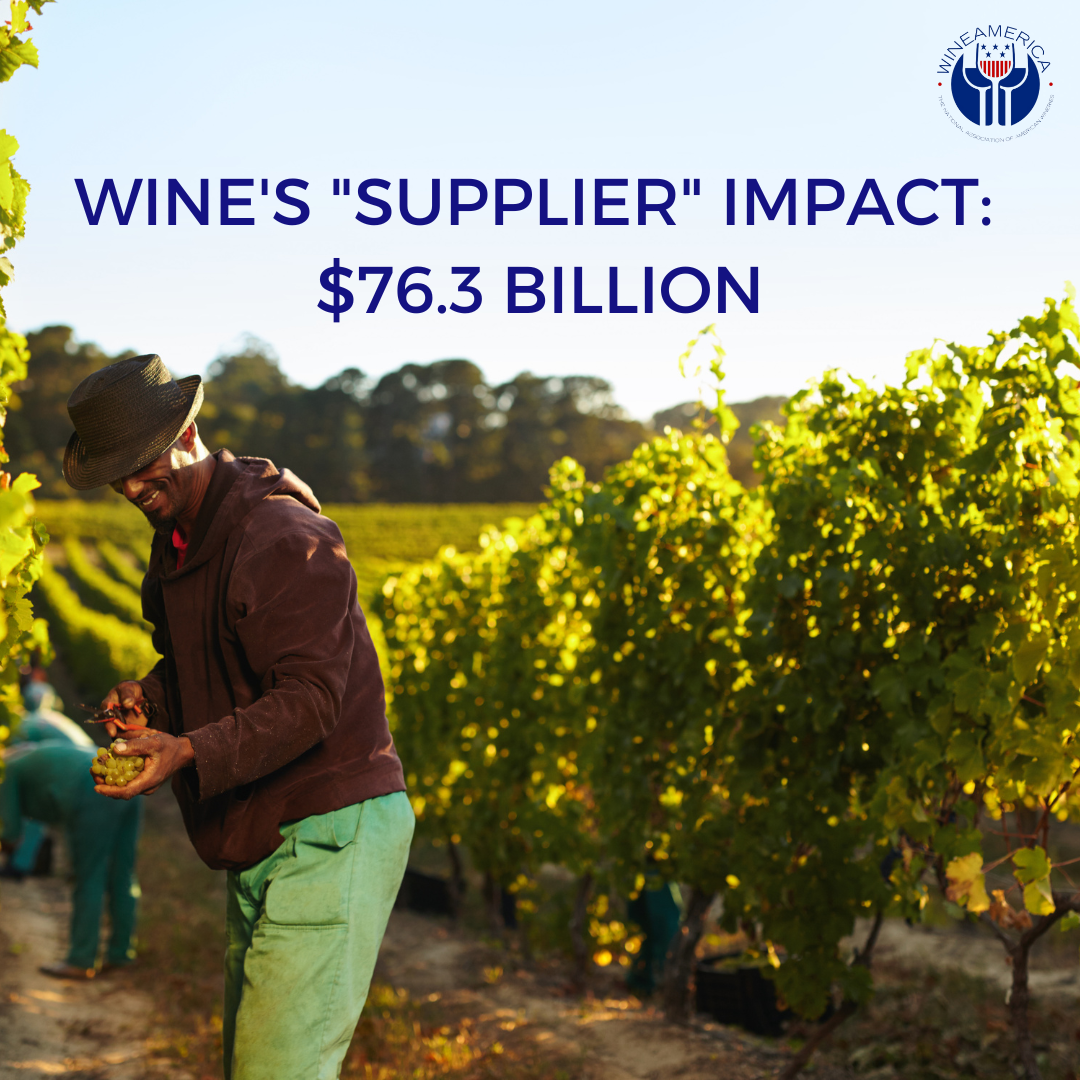–If you didn’t have rootstock, how could you grow a grape?
–If you didn’t have tanks, how would your ferment the juice?
–If you didn’t have bottles, how would you package the wine?
–If you didn’t have trucks, how would you get it to market?
–And if you didn’t have computers, how would you keep track of everything from vine to glass?
Supplies from suppliers are a vital part of the wine industry, accounting for $76,257,092,400 (28%) of the industry’s total impact on the American economy ($276 billion). This is known as “Indirect” or “Supplier” impact, complementing “Direct” and “Induced” impacts.
It’s definition: Jobs and activity related to suppliers of goods and services needed to support the grape and wine industry. The economic sub-categories include: Agriculture, Mining, Construction, Manufacturing, Wholesale, Retail, Transportation & Communication, Finance & Insurance & Real Estate (FIRE), Business & Personal Services, Travel & Entertainment, Government, and Other.
To understand the scale of Supplier Impact, all you need to do is attend the massive annual Unified Wine & Grape Symposium in Sacramento each January where the enormous convention center hall is jampacked with vendors representing all of these categories. (The trade show floor is also the site of an all-American wine tasting on one of the afternoons, featuring wines from various states throughout the country.) The 2023 event is on January 24-26 (unifiedsymposium.org)
WineAmerica’s 2022 National Economic Impact Study vividly demonstrates the incredible value-added nature of wine and its huge contributions to many sectors of the American economy by measuring the impacts in and of all these categories.
Let’s reorder the list above in favor of total impact (“Output”) shown in Billions of dollars:
- Business & Personal Services $17.187 Billion
- Transportation & Communication 14.620
- Finance, Insurance & Real Estate 14,247
- Manufacturing 7.818
- Agriculture 3.750
- Government 1.547
- Travel & Entertainment 1.385
- Construction 0.753
- Retail 0.667
- Mining 0.578
For a sense of scale, even the smallest category (Mining) is still over half a billion, at $578,171,200. And the top three categories in particular give some indication about how many different businesses and jobs are supported by the wine industry. The “Business & Personal Services” sector alone accounts for 115,960 jobs, or nearly a third of the total, and $9,395,086,200 in wages, which is more than a third.
As a reminder, of the $276 billion total economic impact of the wine industry, $111.5 billion (40%) is direct impact, while $76.3 billion (28%) is supplier impact and another $88.3 billion (32%) is induced impact benefiting the communities around the country which wine touches. In other words, 60% of wine’s economic impact benefits businesses, communities and individuals that are not directly involved with the production, distribution, and sales of wine. That’s called value-added.
Next week we’ll take a look at the Induced category’s many benefits from the wine industry. Detailed data and related information for all 50 states is on our website.
For data sets, reports, infographics, detailed methodology, and FAQs, visit www.wineamerica.org.


